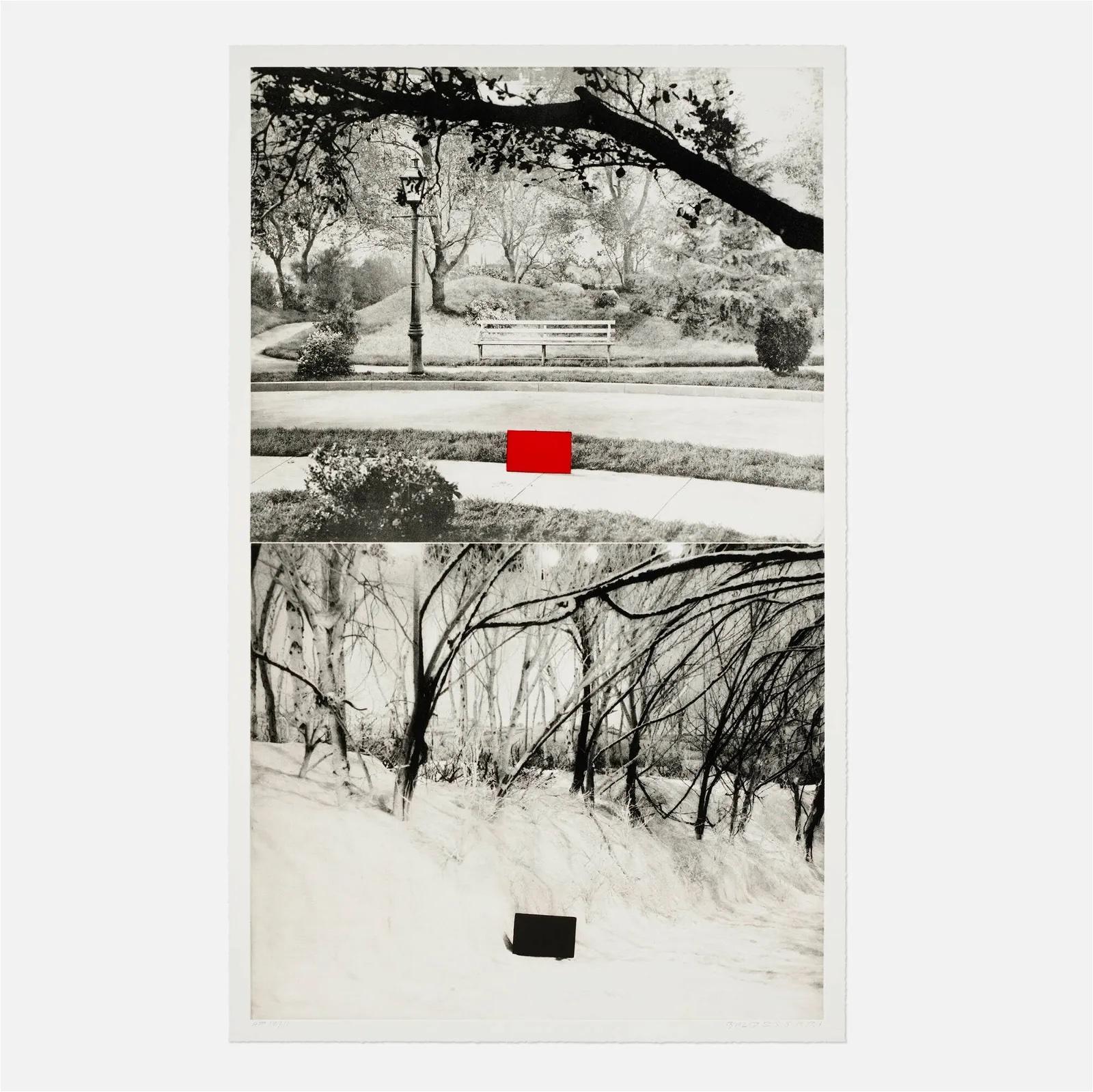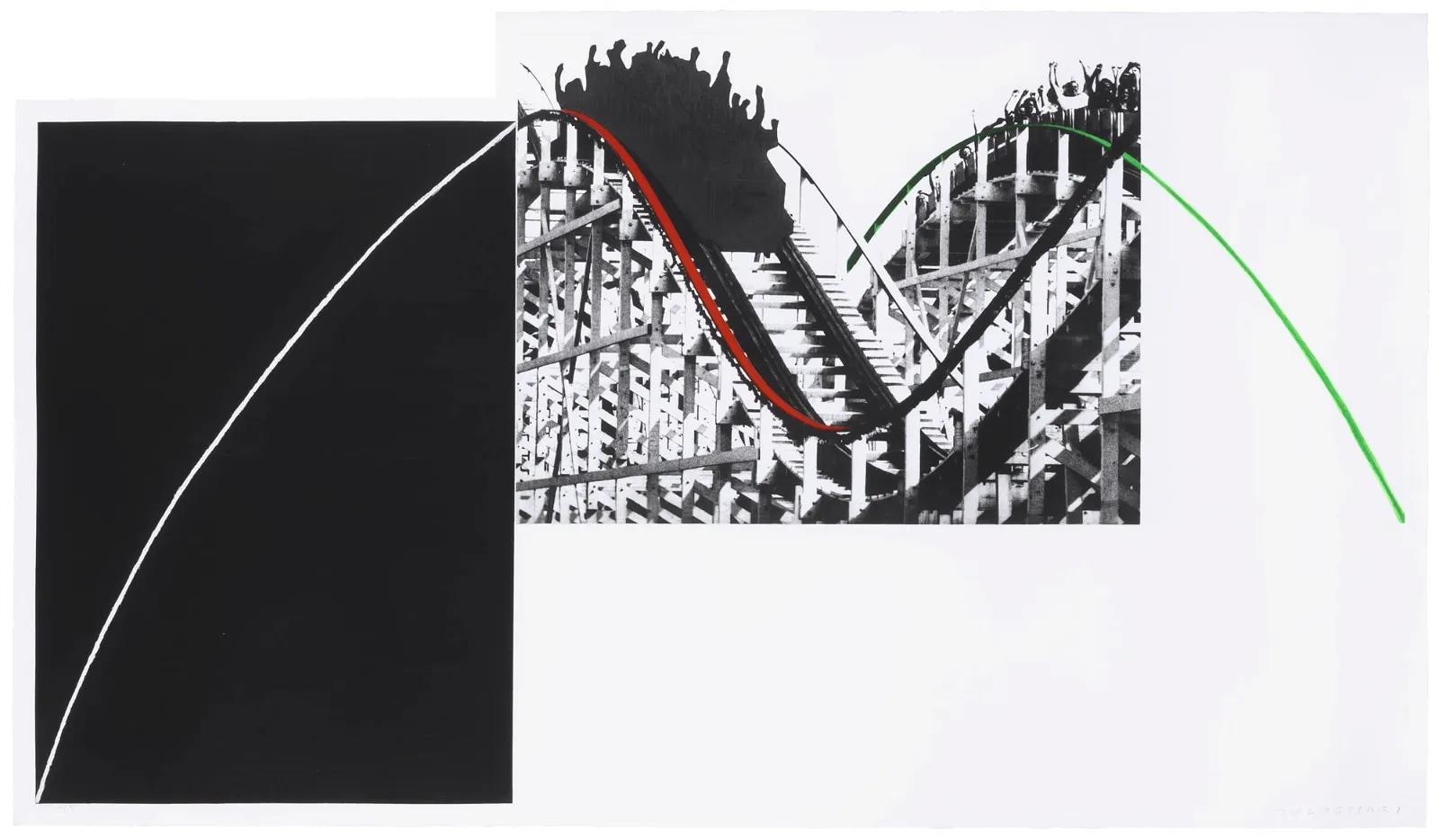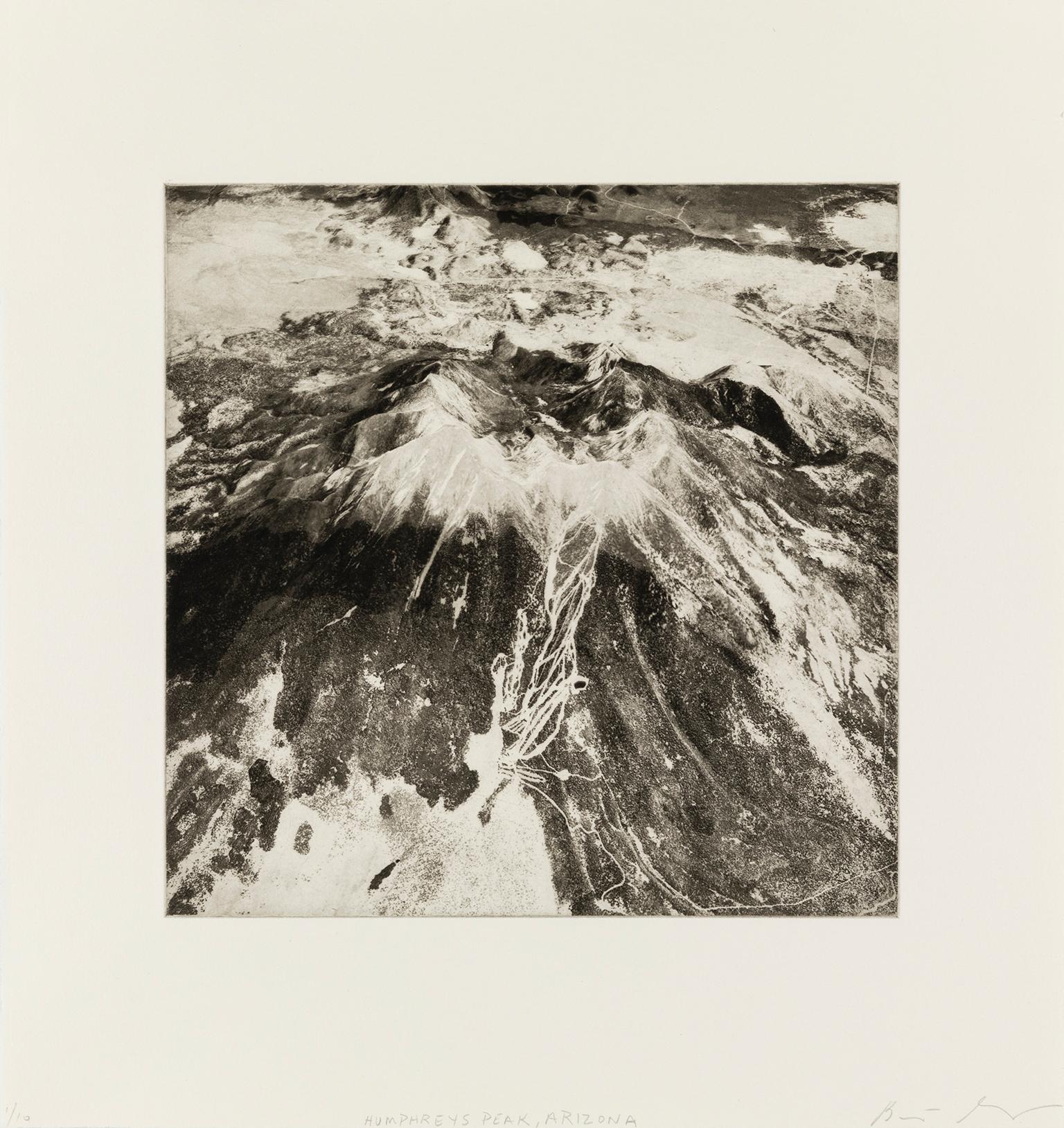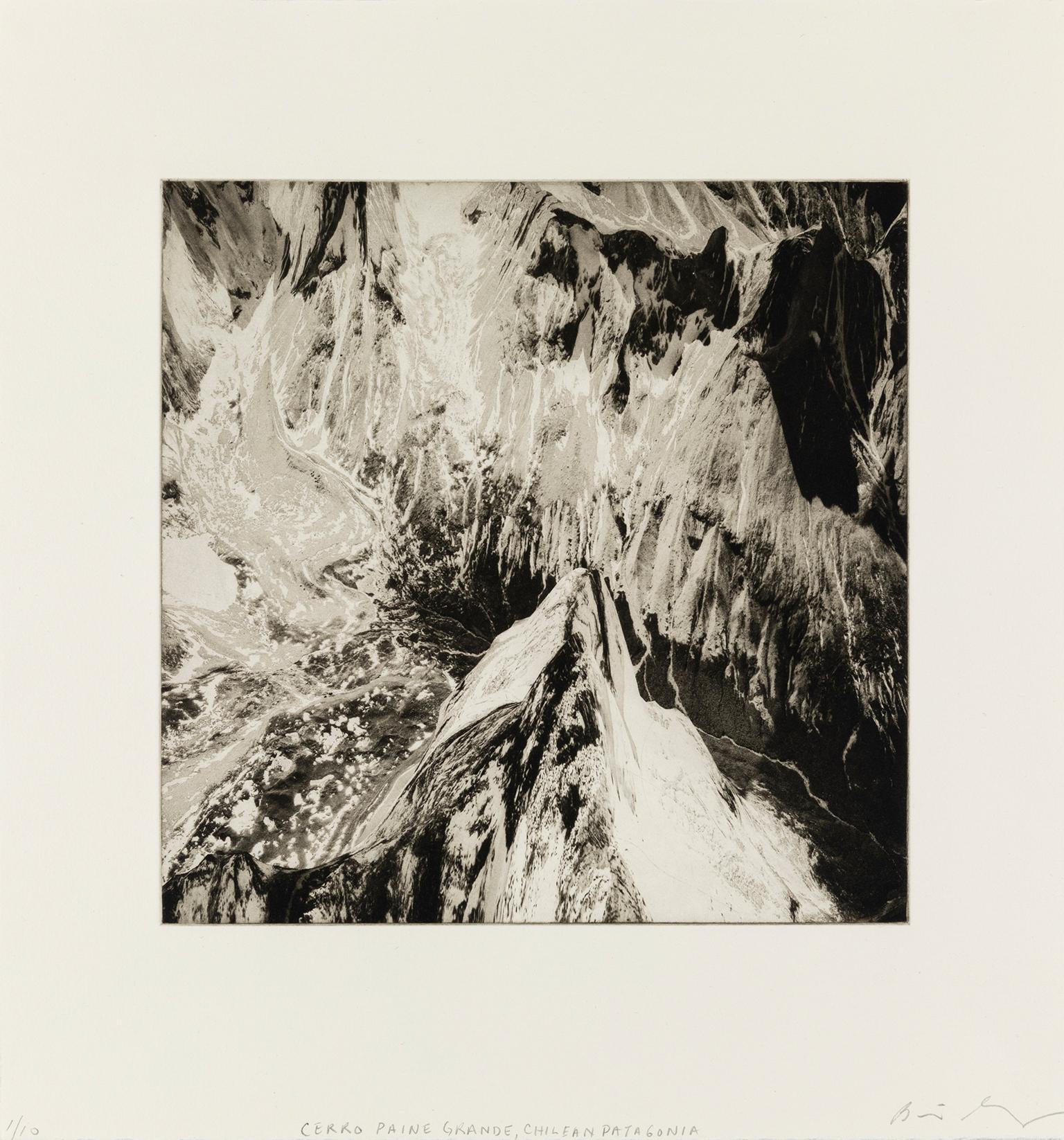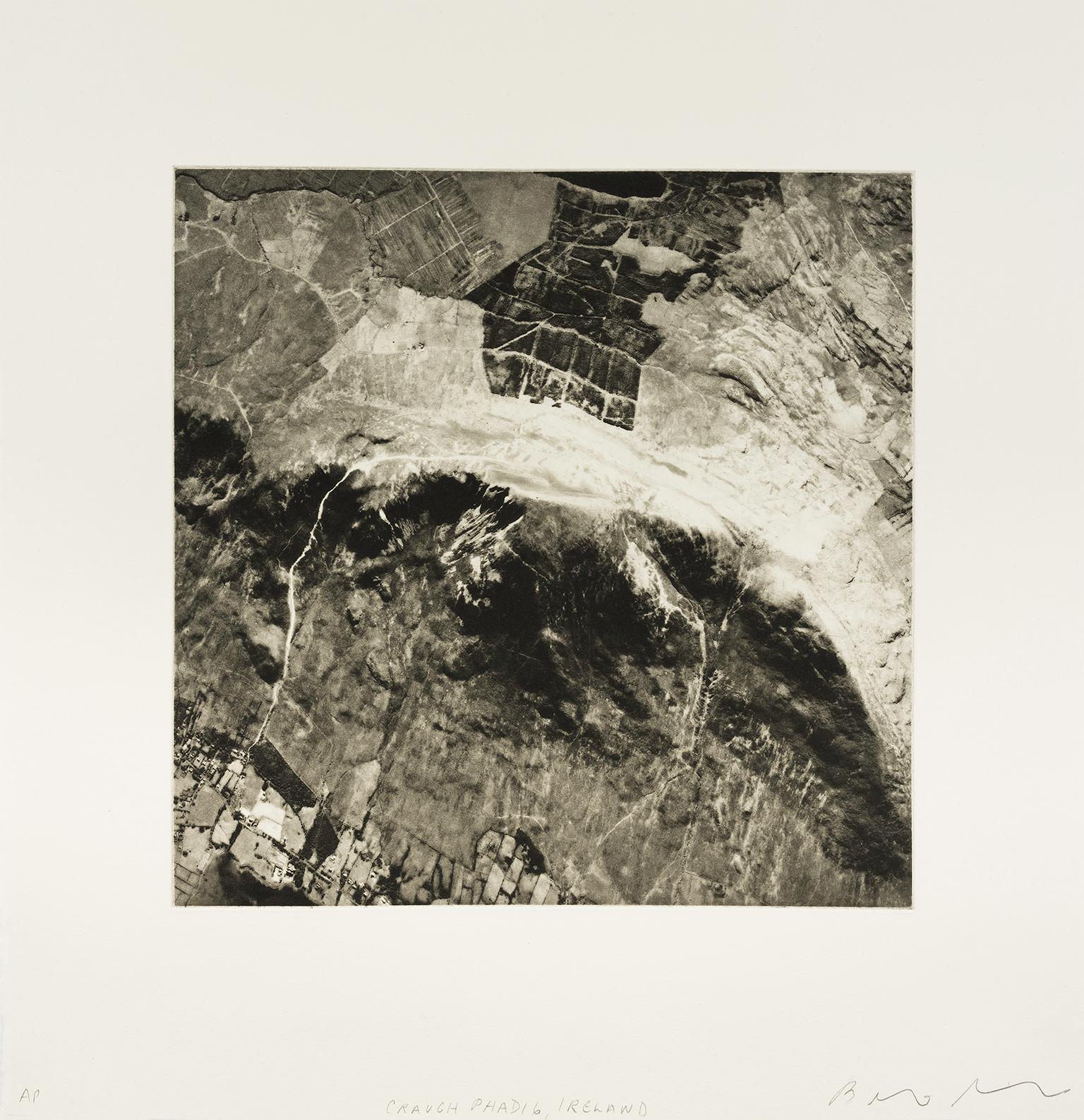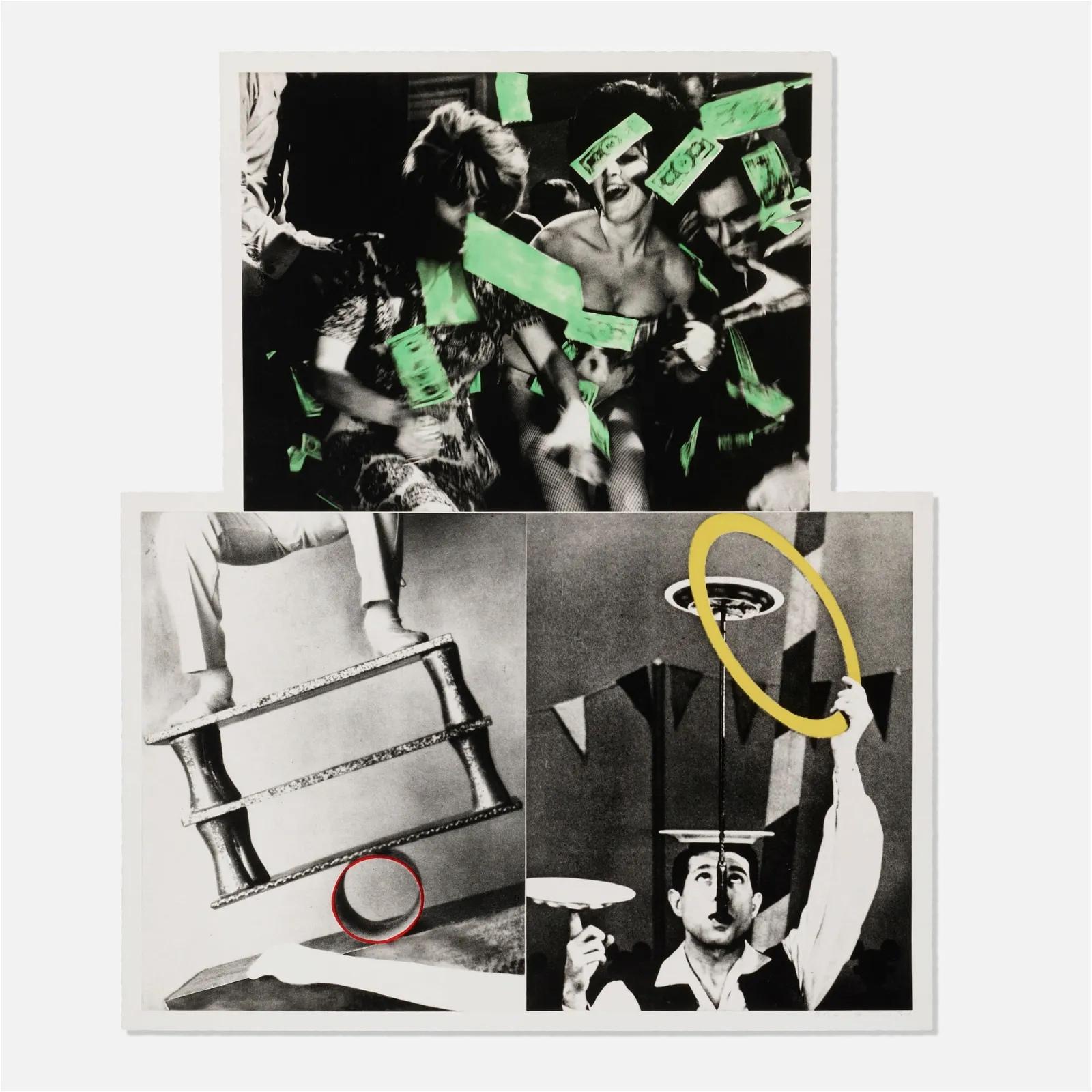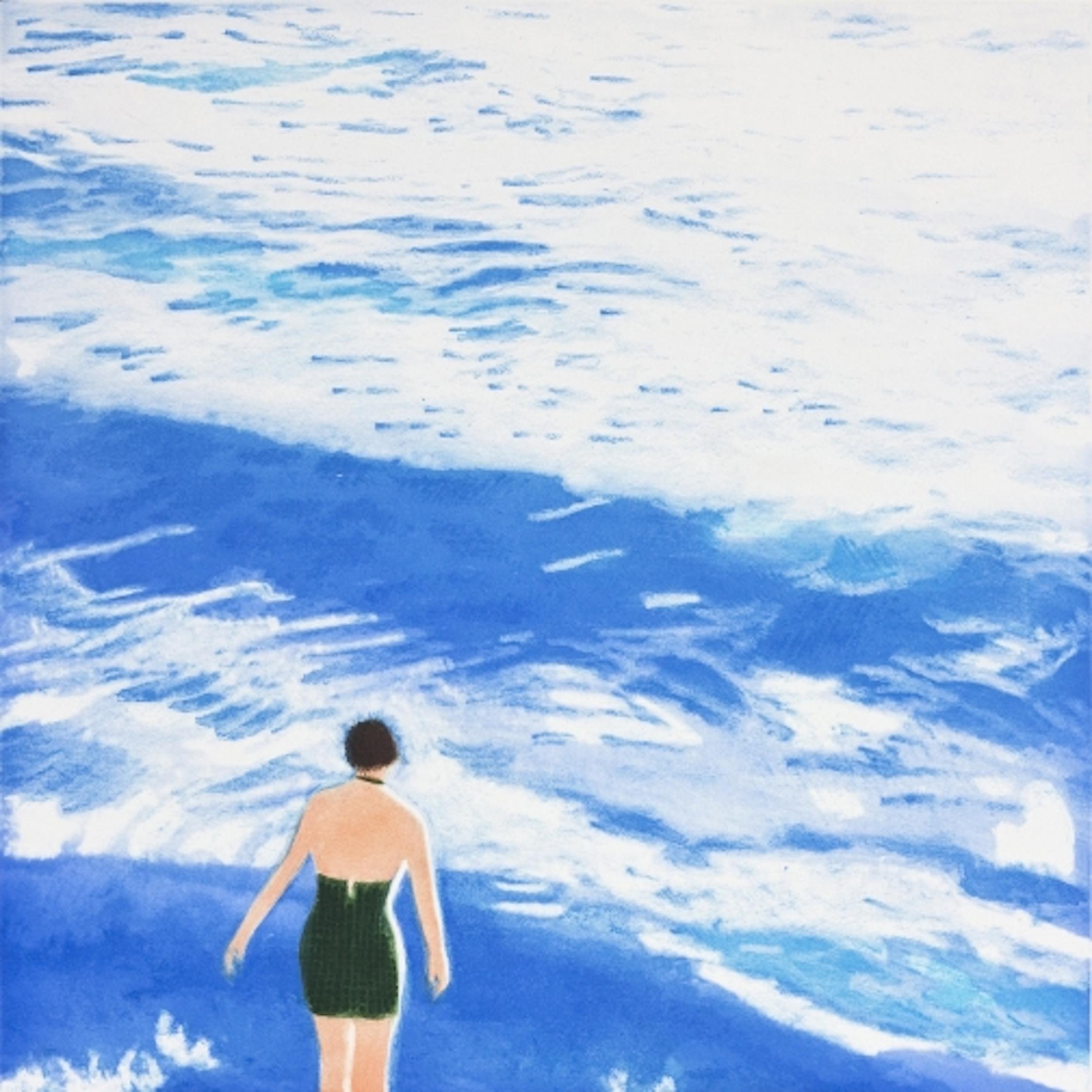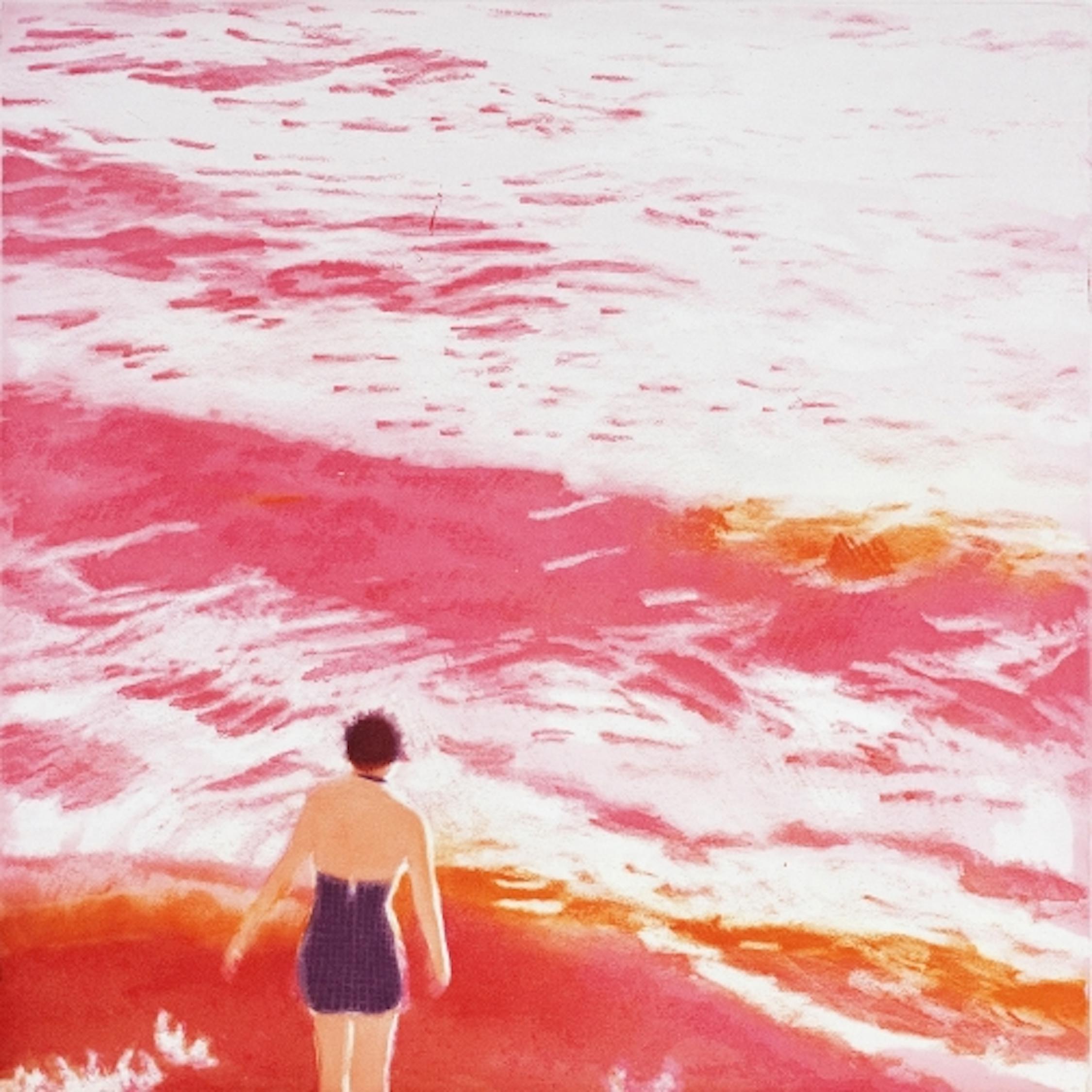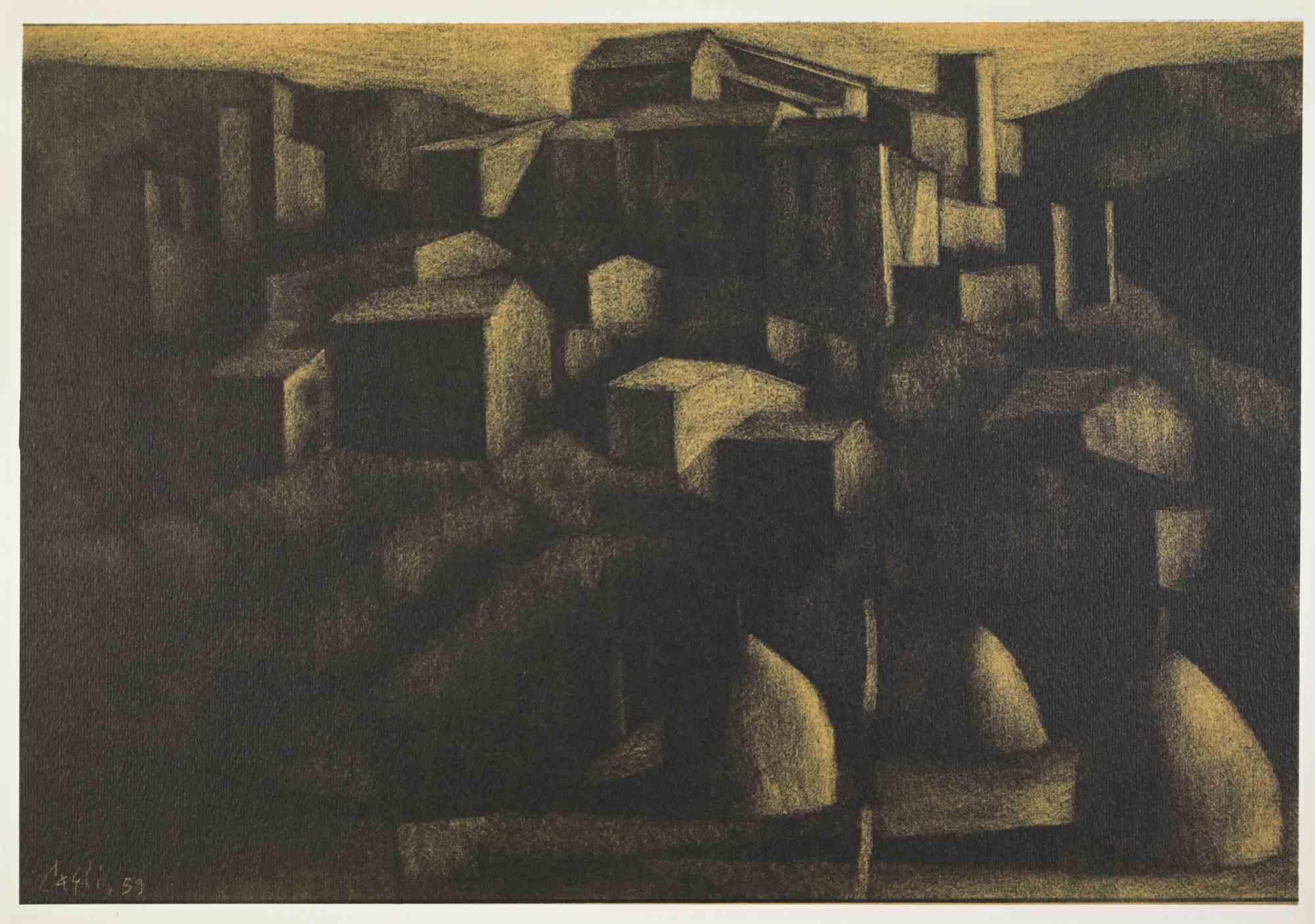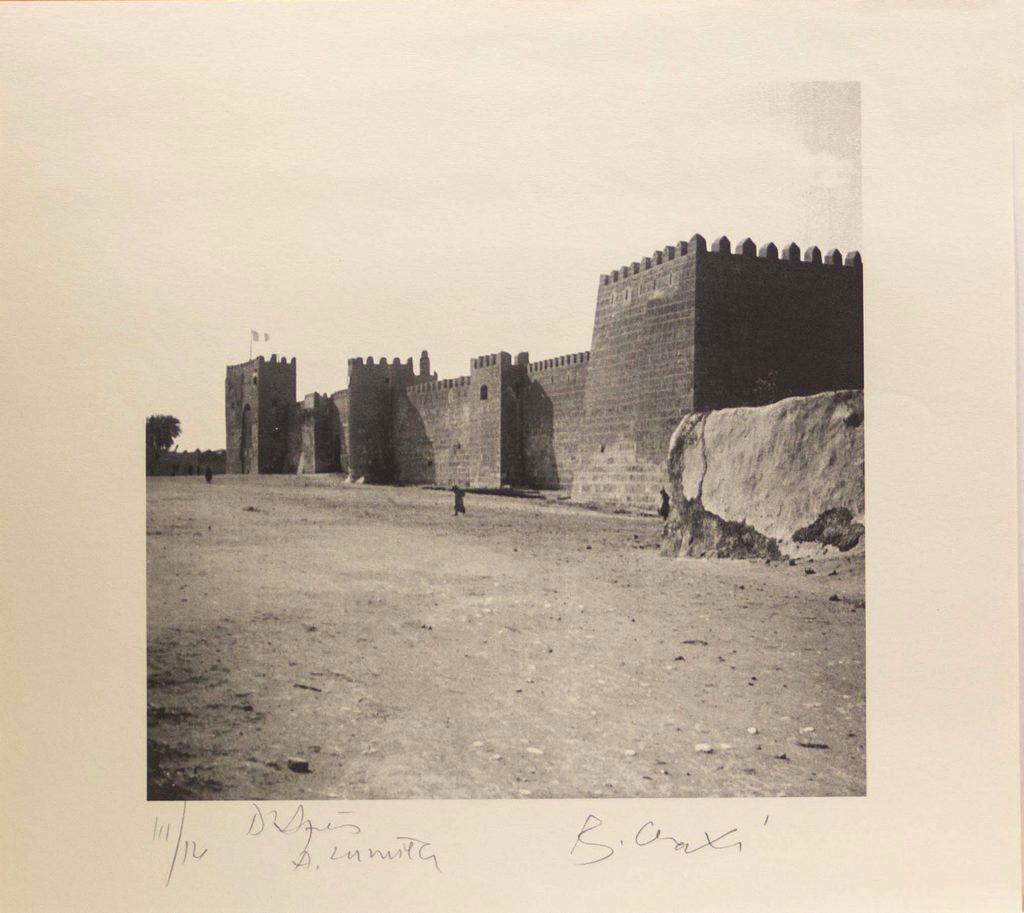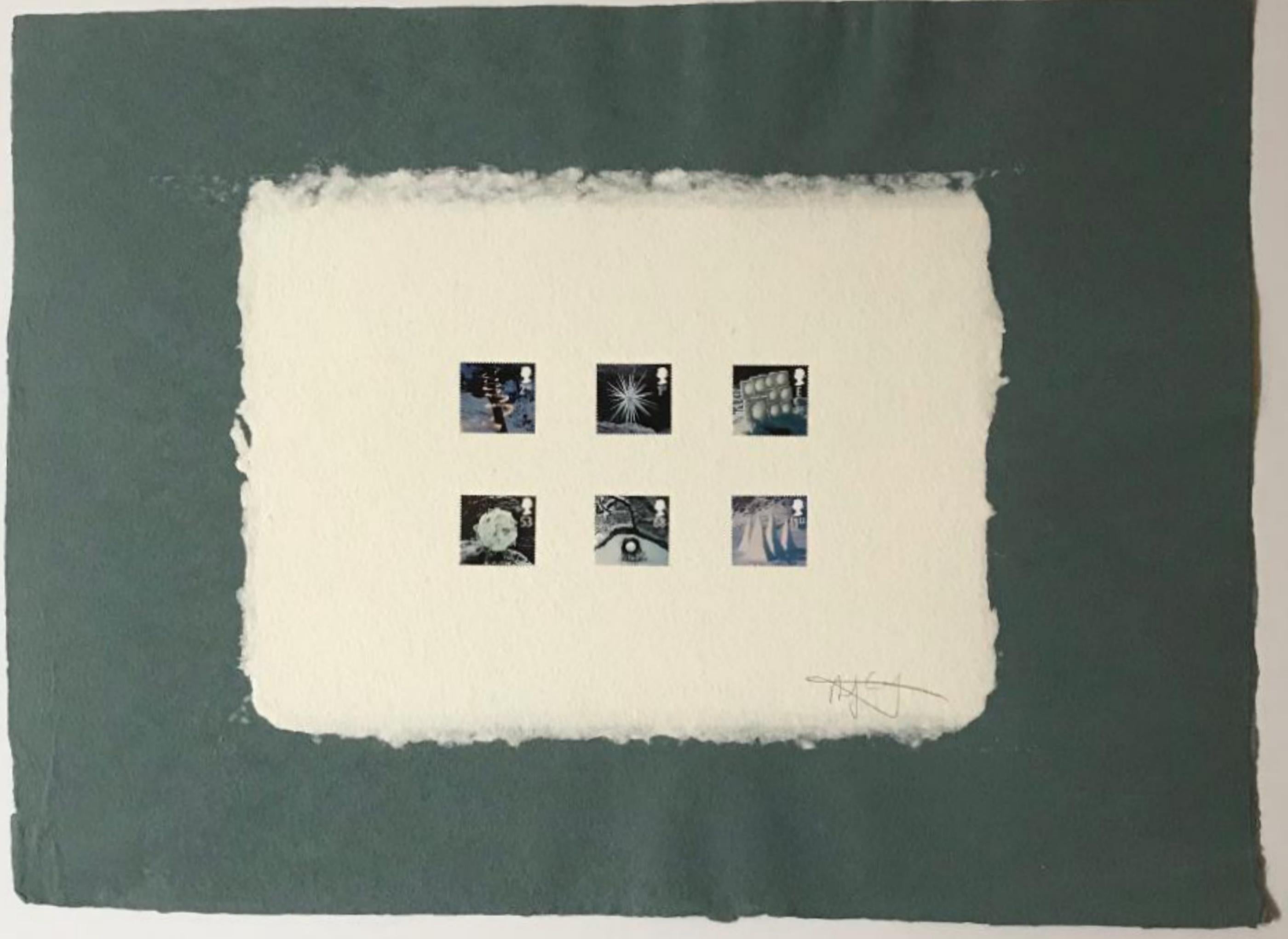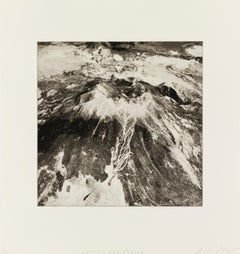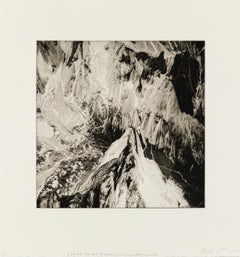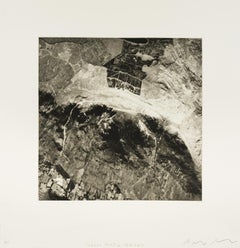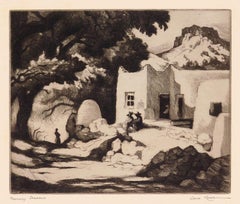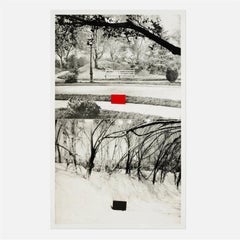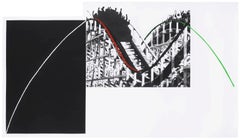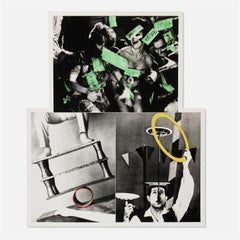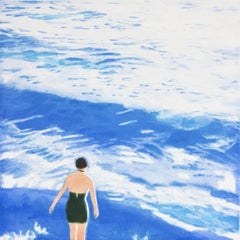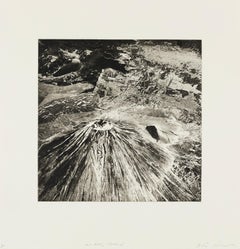
'Mount Fuji, Japan' — from the series 'Axis Mundi', Contemporary
View Similar Items
Want more images or videos?
Request additional images or videos from the seller
1 of 8
Beth Ganz'Mount Fuji, Japan' — from the series 'Axis Mundi', Contemporary2019
2019
$1,400List Price
About the Item
- Creator:
- Creation Year:2019
- Dimensions:Height: 10.5 in (26.67 cm)Width: 10.5 in (26.67 cm)
- Medium:
- Movement & Style:
- Period:
- Condition:
- Gallery Location:Myrtle Beach, SC
- Reference Number:Seller: 1041381stDibs: LU532311372232
About the Seller
5.0
Recognized Seller
These prestigious sellers are industry leaders and represent the highest echelon for item quality and design.
Platinum Seller
Premium sellers with a 4.7+ rating and 24-hour response times
Established in 1995
1stDibs seller since 2016
311 sales on 1stDibs
Typical response time: 1 hour
Associations
International Fine Print Dealers Association
Authenticity Guarantee
In the unlikely event there’s an issue with an item’s authenticity, contact us within 1 year for a full refund. DetailsMoney-Back Guarantee
If your item is not as described, is damaged in transit, or does not arrive, contact us within 7 days for a full refund. Details24-Hour Cancellation
You have a 24-hour grace period in which to reconsider your purchase, with no questions asked.Vetted Professional Sellers
Our world-class sellers must adhere to strict standards for service and quality, maintaining the integrity of our listings.Price-Match Guarantee
If you find that a seller listed the same item for a lower price elsewhere, we’ll match it.Trusted Global Delivery
Our best-in-class carrier network provides specialized shipping options worldwide, including custom delivery.More From This Seller
View All'Humphrey's Peak, Arizona' — from the series 'Axis Mundi', Contemporary
Located in Myrtle Beach, SC
Beth Ganz, 'Humphrey's Peak, Arizona', copperplate photogravure etching, edition 10, 2021. Signed, titled, and numbered 6/10 in pencil. A superb, richly-inked impression in warm black ink, on cream, wove, cotton rag paper; the full sheet in excellent condition. Archivally sleeved, unmatted.
Image size 10 1/2 x 10 1/2 inches; sheet size 16 x 15 1/2 inches.
From the artist's series of 64 photogravure etchings, 'Axis Mundi'. Additional works from the series are available; please inquire.
Exhibited: 'Photography in Ink, A Look at Contemporary Copper-Plate Photogravure,' Curated by Leandro Villaro, Penumbra Exhibition Space Gallery, Nov 30, 2022 - March 15, 2023.
ABOUT THE IMAGE
Humphreys Peak (Hopi: Aaloosaktukwi, Navajo: Dookʼoʼoosłííd) is the highest natural point and the second most prominent peak after Mount Graham in the U.S. state of Arizona, with an elevation of 12,637 feet (3,852 m) and is located within the Kachina Peaks Wilderness in the Coconino National Forest, about 11 miles (17.7 km) north of Flagstaff, Arizona. Humphreys Peak is the highest of a group of dormant volcanic peaks known as the San Francisco Peaks.
Humphreys Peak was named in about 1870 for General Andrew A. Humphreys, a U.S. Army officer who was a Union general during the American Civil War and who later became Chief of Engineers of the United States Army Corps of Engineers.
The San Francisco Peaks are a sacred place for Hopi, Navajo, Havasupai, Zuni, Apache, and other Native American tribes. A place of sacred shrines and ancestral dwellings, The Peaks are associated with emergence, deities, ancestors, life-giving moisture, and spiritual ceremony and are still actively utilized today. Numerous medicinal herbs and other plants used in traditional ceremonies and to treat ailments are found at several levels of the Peaks. The plants are said to have place-specific energies—that is, they must come from these sacred sites to fulfill their proper function.
To the Hopi, the Peaks are Nuvatukaovi, “The Place of Snow on the Very Top,” home for half the year to the ancestral kachina spirits who live among the clouds around the summit. When properly honored through song and ceremony, it is believed that the kachinas will bring gentle rains to thirsty crops.
ABOUT THE SERIES 'AXIS MUNDI'
"This body of work focuses on satellite images of sacred mountains around the world—places where heaven and earth are thought to meet. The phenomenon of revering mountains as holy sites is an archetype found in many cultures.
"This shared experience finds a visual echo in the ubiquity of images of the earth that are now available to any person with a computer and an Internet connection. What does the specificity of place mean when we can move across the surface of the earth in seconds and reduce everything to a series of pixels? To me, this process recalls abstract painting, which transforms the specific into gesture and form. Rather than treat digital technology as necessarily destructive to human meaning and experience, my work offers new ways of seeing that are reconcilable with the old. To this end, I combine 19th Century Photogravure technique with 21st Century surveillance captures.
"Axis Mundi consists of 64 copperplate photogravures. The work is laid out in a grid, which is an arbitrary conversion of the visual world into a flat space that happens both on the picture plane and in the data processing. The title refers to the belief in a 'world center,' often conceived of as a mountain: a place where communication between higher and lower realms is possible. This project is a search for such a center in a world of decentralization and fragmentation."
—Beth Ganz
ABOUT THE ARTIST
Beth Ganz is a contemporary American multidisciplinary visual artist, who lives and works in New York City. She graduated from Pratt Institute with a BFA (honors) in Painting, Sculpture, and Printmaking. The focus of her work is the intersection of landscape, digital technology, and abstraction. Ganz works in paint, brush, and ink drawing, both independently and alongside digital and analog printing techniques, including photogravure and intaglio printing.
Ganz’s work has been the subject of many solo exhibitions, including 'Atlas Project' at Cynthia-Reeves Gallery, 'Up Close and Far Away, Grids and Toiles: Beth Ganz at Wave Hill House,' Wave Hill, and 'Geothermal Topographies' at Reeves Contemporary. She has been shown in numerous group exhibitions, and her work is represented in many public and private collections, including the 9-11 Memorial Museum, the Library of Congress, the New York Historical Society, and the New York Public Library Prints Collection.
Ganz teaches workshops in photogravure and intaglio at Manhattan Graphics Center and has been a long-time grantee of the Elizabeth Foundation for the Arts.
AWARDS AND RESIDENCIES
2018 – Signal: Tri-State Juried Exhibition (2nd Place), Katonah Museum of Art, Katonah, New York (Juror: Lumi Tan)
2001-2014 – Studio Program, Elizabeth Foundation for the Arts, New York, NY
2005 – Johnson & Johnson Purchase Prize, 48th Annual National Print Exhibition, Hunterdon Museum of Art, Clinton, NJ
1999 – Prints USA Juror’s Award, Springfield Art Museum, Springfield, MO
1993 – 37th Annual National Print Exhibition (Honorable Mention), Hunterdon Art Center, Clinton, NJ
1992 – Small Impressions 1992 (Juror’s Award), Printmaking Council of New Jersey, NJ
BIBLIOGRAPHY: MAGAZINES, JOURNALS, NEWSPAPERS, AND ONLINE MEDIA
2018 – Mary Legrand, “A Signal of Invention,” Bedford Record, July 2018
2017 – Sara Mintz, “Profile of an Artist: Beth Ganz,” Journal of the Print World, Vol. 40, #4, October 2017
2017 – Cate McQuaid, “Critics’ Picks, The Ticket: Music, Theater, Dance, Art and more,” Boston Globe, May 2017 4, 2017
2017 – Beth Ganz, “New Prints: Beth Ganz and the Atlas Project Landscape,” Journal of the Print World, I Vol. 40, #3, July 2017
Collections: Duke Energy, Charlotte, NC; Evelyn Lauder Breast Center at SKMCC, New York, NY; Frost Bank, Houston, Texas; Hofstra Museum, Hofstra University; Johnson and Johnson...
Category
21st Century and Contemporary Contemporary Landscape Prints
Materials
Etching, Photogravure
'Cerro Paine Grande, Chile' — from the series 'Axis Mundi', Contemporary
Located in Myrtle Beach, SC
Beth Ganz, 'Cerro Paine Grande, Chilean Patagonia', copperplate photogravure etching, edition 10, 2021. Signed, titled, and numbered 6/10 in pencil. A superb, richly-inked impression in warm black ink, on cream, wove, cotton rag paper; the full sheet in excellent condition. Archivally sleeved, unmatted.
Image size 10 1/2 x 10 1/2 inches; sheet size 16 x 15 1/2 inches.
From the artist's series of 64 photogravure etchings, 'Axis Mundi'. Additional works from the series are available; please inquire.
Exhibited: 'Photography in Ink, A Look at Contemporary Copper-Plate Photogravure,' Curated by Leandro Villaro, Penumbra Exhibition Space Gallery, Nov 30, 2022 - March 15, 2023.
ABOUT THE IMAGE
Cerro Paine Grande is the highest summit of the Cordillera Paine Mountain Range located within Chile's Torres del Paine National Park, one of the most breathtaking national parks in the world and a UNESCO Biosphere Reserve since 1978. The Torres del Paine or Towers of Paine are three massive granite pillars...
Category
21st Century and Contemporary Contemporary Landscape Prints
Materials
Etching, Photogravure
'Craugh Phadrig, Ireland' — from the series 'Axis Mundi', Contemporary
Located in Myrtle Beach, SC
Beth Ganz, 'Craugh Phadrig, Ireland', copperplate photogravure etching, edition 10, 2020. Signed, titled, and numbered 6/10 in pencil. A superb, richly-inked impression in warm black ink, on cream, wove, cotton rag paper; the full sheet in excellent condition. Archivally sleeved, unmatted.
Image size 10 1/2 x 10 1/2 inches; sheet size 16 x 15 1/2 inches.
From the artist's series of 64 photogravure etchings, 'Axis Mundi'. Additional works from the series are available; please inquire.
Exhibited: 'Photography in Ink, A Look at Contemporary Copper-Plate Photogravure,' Curated by Leandro Villaro, Penumbra Exhibition Space Gallery, Nov 30, 2022 - March 15, 2023.
ABOUT THE IMAGE
Cruach Phadraig in Irish, known as Croagh Patrick...
Category
21st Century and Contemporary Contemporary Landscape Prints
Materials
Etching, Photogravure
'Noonday Shadows' — Mid-Century Southwest Regionalism
By Gene Kloss
Located in Myrtle Beach, SC
'Noonday Shadows', etching and drypoint, edition 75, 1941, Kloss 376. Signed, and titled in pencil. A superb, richly inked impression, in warm black ink, on buff wove paper, in excel...
Category
1950s American Modern Landscape Prints
Materials
Drypoint, Etching
'Riders at Sundown' — Mid-Century Southwest Regionalism
By Gene Kloss
Located in Myrtle Beach, SC
'Riders at Sundown', aquatint and drypoint, edition 75, 1953, Kloss 451. Signed, titled, and annotated 'Artist's Proof' in pencil. A superb, richly-inked, atmospheric impression, in ...
Category
1950s American Modern Landscape Prints
Materials
Drypoint, Aquatint
Church at Chichicastenango
By Jesse F. Reed
Located in Myrtle Beach, SC
Jesse F. Reed, 'Church at Chichicastenango', color etching and aquatint, 1963. Signed and titled in pencil. Signed and dated in the plate, lower right. A fine, richly-inked impression, with fresh colors, on cream wove paper; the full sheet with margins (1 3/8 to 2 1/2 inches), in excellent condition.
Chichicastenango, also known as Santo Tomás Chichicastenango, is a town in the El Quiché department of Guatemala, located in a mountainous region about 140 km northwest of Guatemala City. Chichicastenango is a K'iche' Maya cultural center, with the great majority of the municipality's population indigenous Mayan K'iche. The church depicted is the 400-year-old church Iglesia de Santo Tomás. Built atop a Pre-Columbian temple platform, the steps which remain venerated today, originally led to a temple of the pre-Hispanic Maya civilization. K'iche' Maya priests still use the church for their rituals, burning incense and candles. Each of the 18 stairs that lead up to the church stands for one month of the Maya calendar year.
ABOUT THE ARTIST
Jesse Floyd Reed (1920-2011) studied art in New York City at the Grand Central School of Art and the Art Students’ League. He held degrees in History and English and completed special advance studies in Asian, African, and Latin American art, history and culture. At the time of his retirement, he was a Professor of the Arts Emeritus at Davis & Elkins College, a position he held for over forty-nine years.
A nationally recognized artist since 1947, Professor Reed’s art has been shown in hundreds of museums, libraries, colleges, and universities, including the Boston Museum, National Museum, The Library of Congress, Brooklyn Museum, and Seattle Museum. In his native West Virginia, he is represented in the permanent collections of the Huntington Museum and the Charleston Museum at Sunrise.
The recipient of many national and regional awards, Reed was a member of the Salmagundi Club in NY, the Boston Printmakers, the Print Club of Albany, and was a founding member of the West Virginia Water...
Category
1960s American Modern Landscape Prints
Materials
Etching, Aquatint
You May Also Like
Two Sets (One with Bench)
By John Baldessari
Located in Miami, FL
John Baldessari (June 17, 1931 - January 2, 2020, American)
Two Sets (One with Bench)
1989-1990
Photogravure with aquatint
47 3/8 29 5/8 in.
Artist's Proof (A.P)
Pencil signed and nu...
Category
1990s Contemporary Landscape Prints
Materials
Aquatint, Photogravure
Price Upon Request
Rollercoaster
By John Baldessari
Located in Miami, FL
John Baldessari
Rollercoaster
1989-90
Color aquatint and photogravure on Somerset paper
38 3/4 x 67 1/4 in.
P.P. (Printer's Proof)
Pencil signed and numbered
Category
1990s Contemporary Landscape Prints
Materials
Aquatint, Photogravure
Price Upon Request
Life's Balance (with Money)
By John Baldessari
Located in Miami, FL
John Baldessari
Life's Balance (with Money)
1989-90
Etching, aquatint and photogravure in colors, on irregularly shaped Somerset paper
51 x 42 3/4 in.
Edition of 45
Pencil signed and...
Category
1990s Contemporary Landscape Prints
Materials
Etching, Aquatint, Photogravure
Price Upon Request
WADING I (BLUE)
By Isca Greenfield-Sanders
Located in Fairfield, CT
Direct to plate photogravure and aquatint. Edition of 40.
Category
2010s Landscape Prints
Materials
Paper, Aquatint, Photogravure
WADING I (PINK)
By Isca Greenfield-Sanders
Located in Fairfield, CT
Direct to plate photogravure and aquatint. Edition of 40.
Category
2010s Landscape Prints
Materials
Paper, Aquatint, Photogravure
Landscape - Phototype after Corrado Cagli - Mid-20th Century
By Corrado Cagli
Located in Roma, IT
Landscape is a artwork realized after Corrado Cagli in the middle of the 20th century.
Photype print.
Signed on the low side.
Good condition.
Corrado Cagli (Ancona, 1910 - Ro...
Category
Mid-20th Century Contemporary Figurative Prints
Materials
Photogravure
